Cricket is a beautiful “bat and ball” game. And with an estimated 1 billion fans worldwide, it is the second-most popular sport in the world behind soccer. To the uninitiated, however, cricket can seem like a far-away universe.
One day, you score a hundred, and in the next game, you go for a duck.
One day, you take five wickets, and another, you concede 100 runs without bagging a scalp.
One day, you make a stunning catch, and the next, you make a simple drop that decides the fate of a match.
The uncertainty is why so many people love cricket. But if you’re not one of them, and all of this sounds like a incomprehensible foreign language, we’re here to help.
Before you can play or follow cricket, you first need to understand it. Here is a primer, so you, too, can begin to enjoy this global game.
Basic Rules
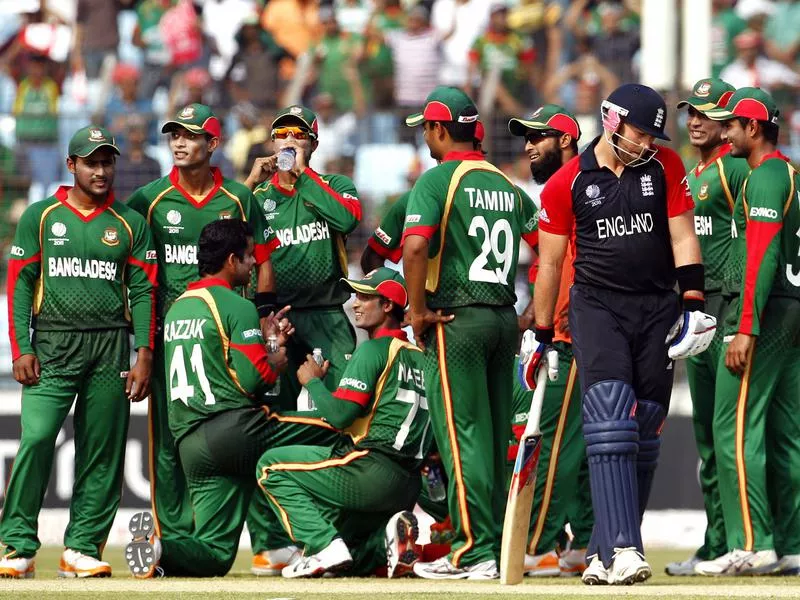
England’s batsman Matt Prior, foreground right, walks away as the Bangladesh team watch the electronic score board after wicketkeeper Mushfiqur Rahim, unseen, ran Prior out for 15 runs during their 2011 Cricket World Cup Group B match at the Zahur Ahmed Chowdhury Stadium in Chittagong, Bangladesh. Themba Hadebe / AP Photo
First, let’s get familiar with the basic rules, or laws, of cricket.
Each game, or match, is played between two teams of 11 players on a field.
A match is divided into two innings (note: the term “innings” always is plural in cricket).
Each side takes a turn to bat a ball and score runs in an innings, while the other side bowls/fields the ball to prevent the opposition from scoring.
The goal is to score as many runs as possible against the opponent.
The Field
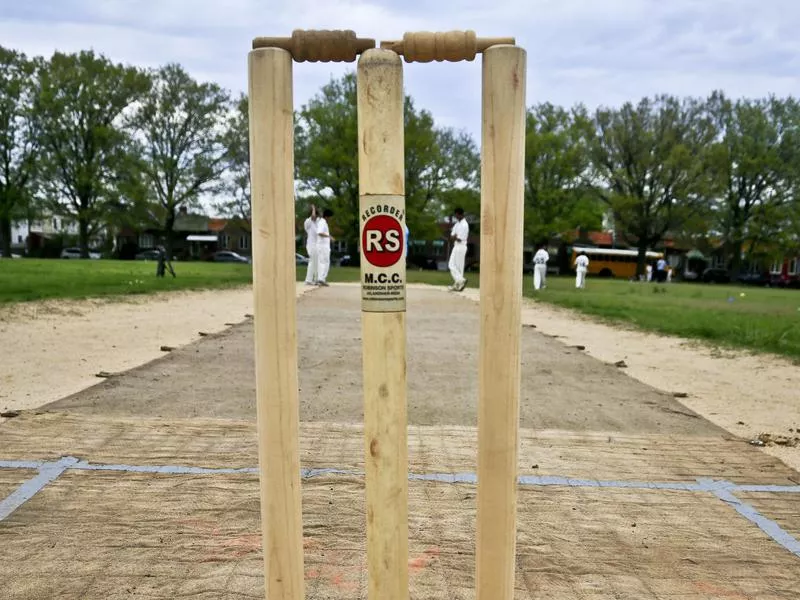
A wicket — three wooden stump poles topped with two wooden crosspieces called bails — is set up for a Public School Athletic League (PSAL) cricket match between John Adams and Midwood High Schools at Marine Park in Brooklyn, N.Y., in 2014. Bebeto Matthews / AP Photo
The cricket grounds, or field, have a unique setup.
Pitch —The central strip of the cricket field between the stumps at each end. It is 22 yards (20.12 meters) long by 10 feet (3.04 meters) wide.
Stumps —Three vertical wooden pieces where the ball is thrown.
Bail — One of the two smaller sticks placed on top of stumps.
Wicket — A set of stumps and bails. The wicket, at the heart of a cricket match, is defended by a batsman, who attempts to keep a bowler’s ball from hitting the wicket by first striking the ball to score “runs” and not “outs.”
Players
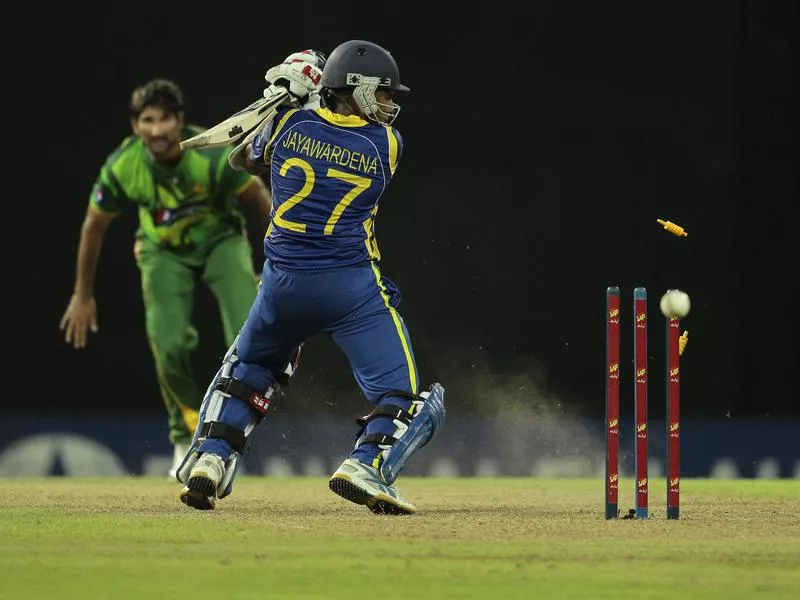
Sri Lankan batsman Mahela Jayawardene bowled out off Pakistan’s bowler Sohail Tanvir, back, during the fourth one day international cricket match between Pakistan and Sri Lanka in Colombo, Sri Lanka, on June 16, 2012. Eranga Jayawardena / AP Photo
You may notice cricket has a few similarities to baseball. As a result, certain aspects of the game might appear familiar. Others, a bit stranger.
Batsman/batter —Player who hits the ball.
Bowler —Player who delivers, or throws, the ball.
Wicket-keeper — Player who collects the ball behind the stumps.
Striker —Player who faces the ball.
Non-striker — Player who is at the other end of a cricket pitch.
Fielders — Players who save runs for the team by diving, running behind the ball to stop boundary, and throw the ball to the keeper, or bowler.
Key Terms
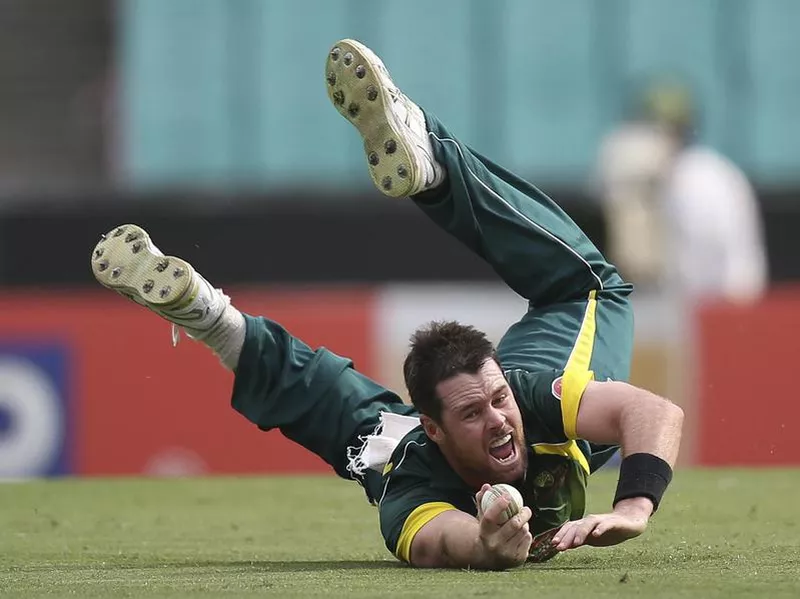
Australian bowler Daniel Christian dives and catches out England cricket player Eoin Morgan during a 2014 one-day international cricket match at the Sydney Cricket Ground in Sydney, Australia. Rob Griffith / AP Photo
Here are a few more helpful words and phrases to speak the language of cricket.
Run — When a batsman reaches the bowling crease, one run will be added, and if he comes back to the batting crease, two runs will be added.
Four — When a batsman hits the ball along the ground, and it reaches the boundary.
Six — Batsman hits the ball over the boundary.
Out — When a batsman is called out, he cannot bat in the same inning again.
Over — The delivery of six consecutive legal balls by one bowler.
Pace bowling — Also known as fast bowling. It is one of the two main approaches to bowling in cricket and refers to the speed of the ball delivery. Fast bowlers also can be referred to as quicks, or pacemen. A typical fast delivery ranges from 137 to 153 km/h, or 85–95 mph.
Spin bowling — When the ball is delivered with rapid rotation, so when it bounces, it does not move in a straight path. A typical spin delivery is 70–90 km/h, or 45–55 mph.
Game Formats
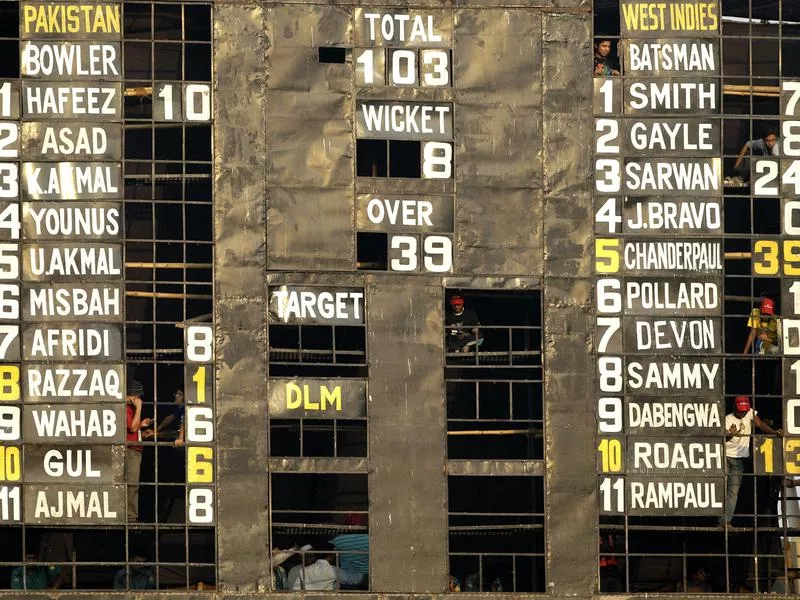
Bangladeshis work a manual scoreboard during the 2011 Cricket World Cup quarterfinal match between Pakistan and West Indies at the Sher-E-Bangla National Stadium in Dhaka, Bangladesh. Themba Hadebe / AP Photo
Test, ODI (one-day international) and T20I (Twenty Twenty International) are the three formats of cricket.
Test is a five-day-game where each team has two innings. Players who succeed in tests are regarded as quality players as it tests patience, endurance, technique and temperament.
In the limited-overs formats, each team only has one inning, and the numbers of overs are limited.
In ODIs, each team has 50 overs to bat. T20Is are similar to ODIs, but there are only 20 overs in the shortest format.
Brief History
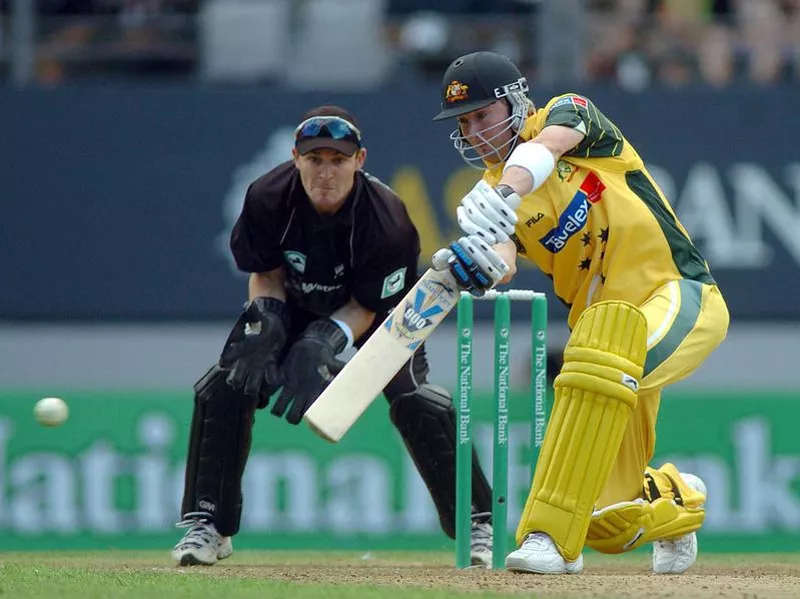
Australia’s Michael Clarke plays in front of New Zealand Black Caps wicket-keeper Brendon McCullum in their third ODI cricket match played at Eden Park in Auckland, New Zealand, on Feb. 26, 2005. Phil Walter / AP Photo/Fotopress
Cricket was first played in Guildford, Surrey, in England around 1550.
Over 300 years later, the first international cricket match, played between Canada and United States of America, took place at St. George’s Cricket Club in New York.
Australia and England locked horns with each other in Melbourne in 1877 for the first-ever test match — the highest form of the sport — and the Aussies beat the visitors by 45 runs.
After another 100 more years, the first ODI, 40-overs-per-side, was played, and once again, Australia and England fought against each other.
Currently, ODI is a 50-overs-per-side.
The inaugural T20I was played between Australia and New Zealand on Feb. 17, 2005, at Auckland.
Common Dismissals (Outs)
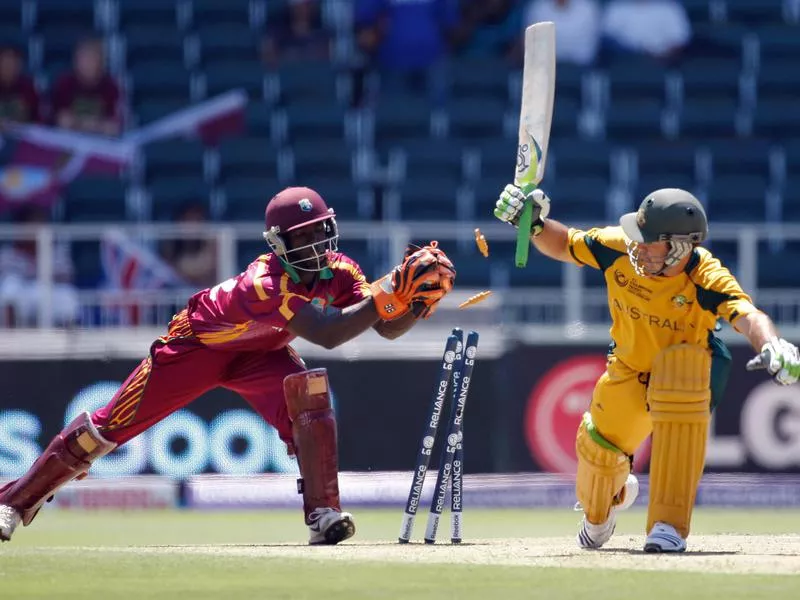
Australia’s captain Ricky Ponting, right, is stumped out by West Indies wicket-keeper Chadwick Walton, off the bowling of West Indies’ Nikita Miller for 79 runs, during their 2009 Champions Trophy cricket match, at Wanderers, in Johannesburg, South Africa. AP Photo
Here are some common dismissals, or outs, in cricket. There are many more but the following modes of dismissals happen often.
Bowled —The ball hits the stumps by bowler’s delivery.
Caught —Batsman hits the ball in the air, and a fielder catches the ball before the ball hits the ground.
Stumped — Batsman steps out of the crease to hit the ball but misses. Then, the wicket-keeper knocks off the bails before the batsman gets their bat or any part of their body grounded behind the batting crease.
Run out — Batsman pushes the ball to a gap and starts running. A fielder collects the ball and hits the stumps directly, or a player collects the ball from the fielder and knocks off the bails before either striker or non-striker reaches the crease.
LBW (leg before wicket) — Batsman tries to hit the ball, misses, and the ball hits the pad. If an umpire thinks it would have hit the stumps, he can rule the batsman out. It’s based on different criteria such as where the ball was pitched, where was the impact, and whether the batsman was attempting to hit the ball.
Teams
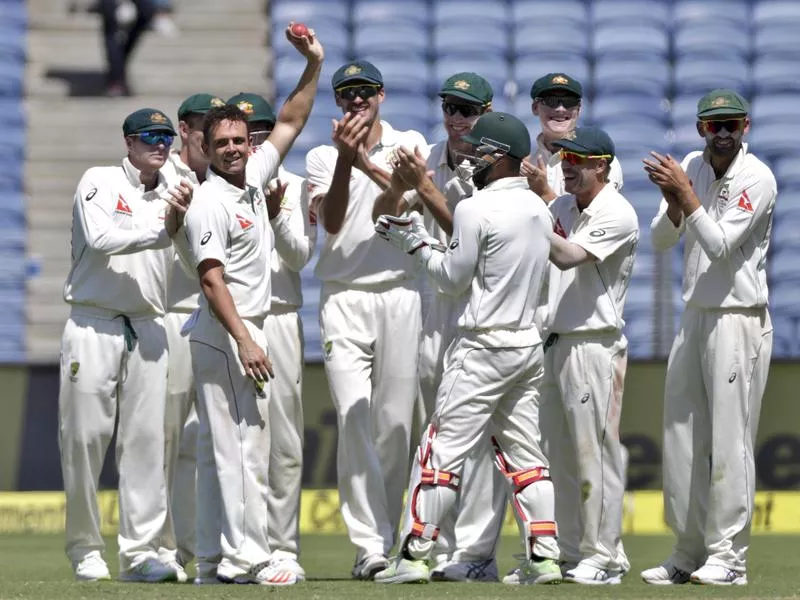
Australia’s Steve O’Keefe, front second left, celebrates the wicket of India’s Ravindra Jadeja’s with his team members during a 2017 cricket test match in Pune, India. Rajanish Kakade / AP Photo
Cricket is played in many countries. However, the International Cricket Council (ICC) has given test status to only 12 teams. They are India, Australia, South Africa, England, New Zealand, Pakistan, Sri Lanka, Bangladesh, West Indies, Afghanistan, Zimbabwe and Ireland.
Apart from these 12 teams, 92 Associate members are playing cricket. In those teams, Nepal, Netherlands, Scotland and United Arab Emirates have both ODI and T20I status while Hong Kong and Oman only have T20I status.
Best Current Teams
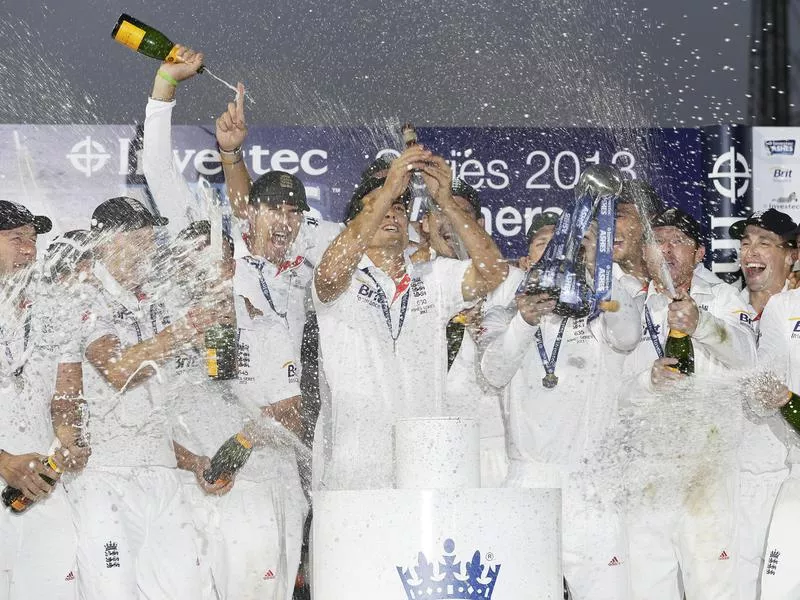
England’s captain Alastair Cook, center, lifts up the Ashes Urn during a 2013 presentation ceremony on the fifth day of the fifth Ashes cricket test against Australia at the Oval in London. Alastair Grant / AP Photo
India, England, and South Africa are the top three teams in tests. However, no team has established ascendancy away from home.
England, India and New Zealand are the top three teams in ODIs. The first two are dominating away from home as well.
Pakistan, India and England are the top three teams in T20Is.
Rivalries
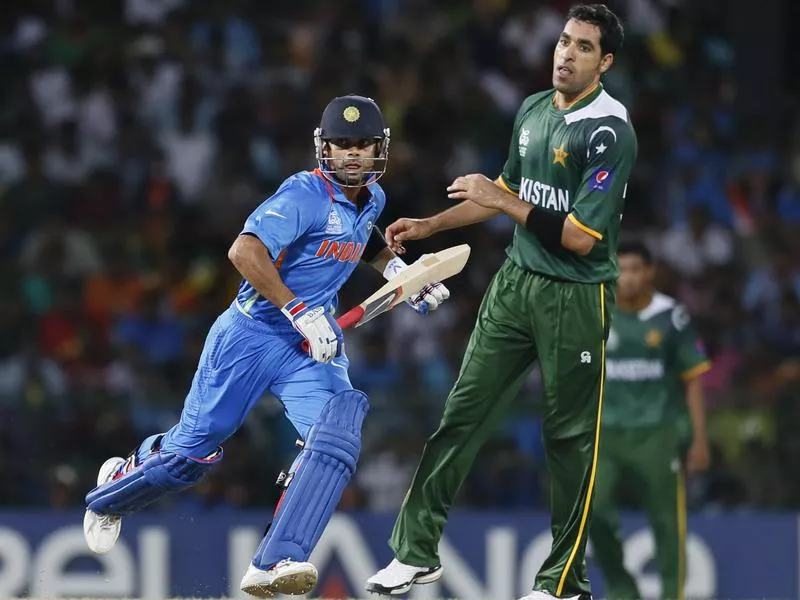
Indian batsman Virat Kohli, left, runs between the wickets as Pakistan bowler Umar Gul, right, watches during a 2012 ICC Twenty20 Cricket World Cup Super Eight match between India and Pakistan in Colombo, Sri Lanka. Gemunu Amarasinghe / AP Photo
The Ashes and India-Pakistan are the most intense rivalries in cricket. The Ashes is a test series played between England and Australia. Australia has won 33 series so far while England has tasted success in 32.
The Ashes in 2005 was arguably the greatest series of all time. Both England and Australia gave their best, and eventually, England won 2-1 and regained the Ashes after 16 long years.
India and Pakistan don’t share a friendly bond as neighboring countries, and that resulted in a fiery rivalry in cricket. Players compete as a matter of pride and patriotism.
Although India has a slightly upper hand in recent encounters, Pakistan beat India in the ICC Champions Trophy final in 2017. India rebounded to defeating its archrival twice in the 2018 Asia Cup.
The two countries have not played any tests since the 2007-08 series held in India due to political tensions.
Legends
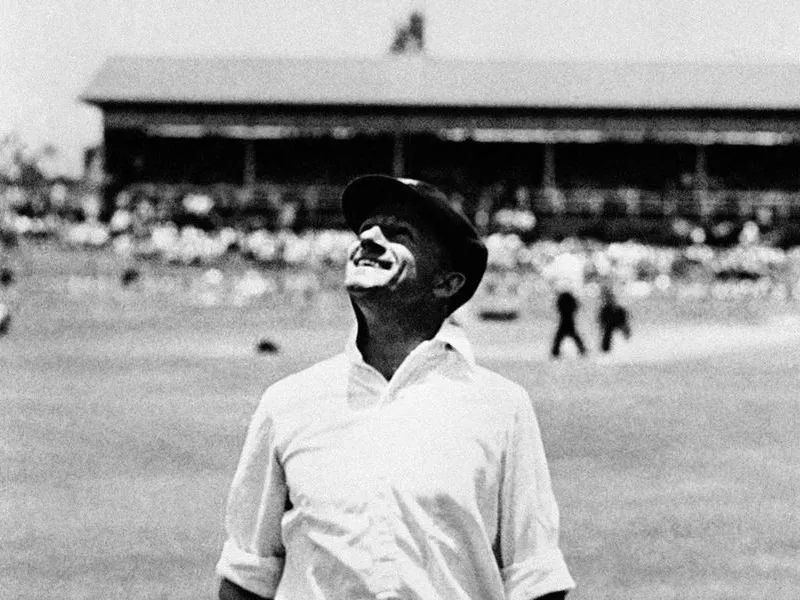
Australian cricket captain Don Bradman before the opening of the first test match against England at Brisbane, Australia, in 1946. AP Photo / File
Sir Don Bradman is the greatest batsman who has ever played the game, and his batting average of 99.94 in tests is 38.07 ahead of the next best, Adam Voges (61.87).
A batting average is how many runs a batsman scores before getting out, and a batting average above 50 is good. Anything above 55 is considered excellent.
Sachin Tendulkar, who has scored 100 international centuries (100 or more runs scored in one inning by a batsman), leads many batting charts, including most runs in tests and ODIs. Ricky Ponting, Brian Lara, Jacques Kallis, Rahul Dravid, and Kumar Sangakkara are other modern-day greats.
Glenn Mcgrath (563 wickets in tests) is arguably the greatest pace bowler of all time. Wasim Akram, Malcolm Marshall, and Shaun Pollock are right up there as well. Muttiah Muralitharan (800 wickets in tests) and Shane Warne (708 wickets in tests) are the greatest spinners of all time.
Current Stars

Indian batsman Virat Kohli leaps in the air to celebrate his century as he took his team to victory over Sri Lanka in a 2012 one-day international cricket match in Hobart, Australia. Chris Crerar / AP Photo
Virat Kohli, Steve Smith, Kane Williamson and Joe Root are the best batsmen of the current era. Smith is a touch above the rest in tests while Williamson and Root have a great record in tests and ODIs. Kohli, on the other hand, has a splendid record across all three formats.
Jasprit Bumrah, Mitchell Starc and Kagiso Rabada are the best pace bowlers in the world across formats while James Anderson is a champion bowler in tests.
Ravichandran Ashwin, Ravindra Jadeja and Yasir Shah are the best spinners in tests whereas Rashid Khan, Kuldeep Yadav, Yuzvendra Chahal, Adil Rashid, and Imran Tahir are the leading spinners in the limited-overs formats.
Leagues
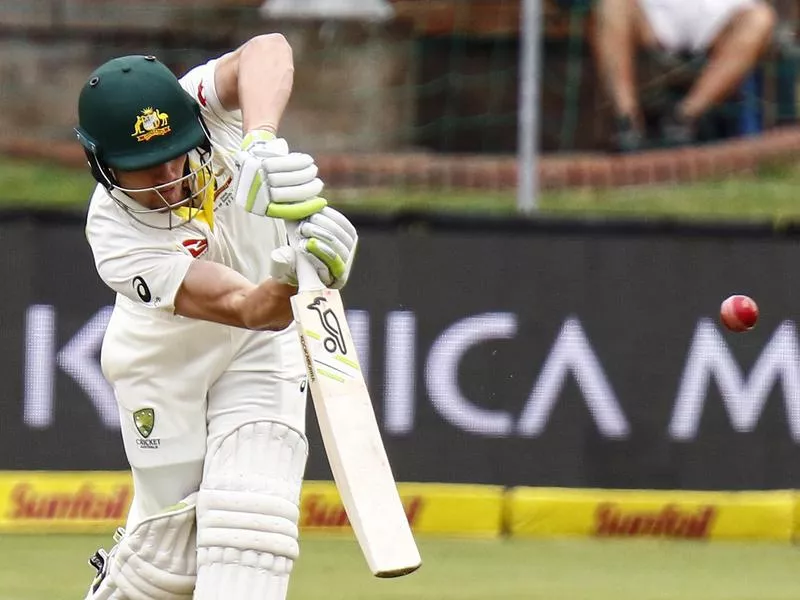
Australia’s Cameron Bancroft on the first day of the second cricket test between South Africa and Australia at St. George’s Park in Port Elizabeth, South Africa, on March 9, 2018. Michael Sheehan / AP Photo
The success of T20 paved the way to many cricket leagues across the world. Big Bash League (Australia), Caribbean Premier League (West Indies), Pakistan Premier League and Bangladesh Premier League are some of the popular ones.
However, Indian Premier League (IPL) stands above the rest by some distance. Indian players have a huge fan following, and they only play in IPL, which makes it the most-viewed league.
Riding on the success of various T20 leagues, the inaugural T10 (10-overs-per-side) league was held in Sharjah, a United Arab Emirates city, in 2018.
Popularity
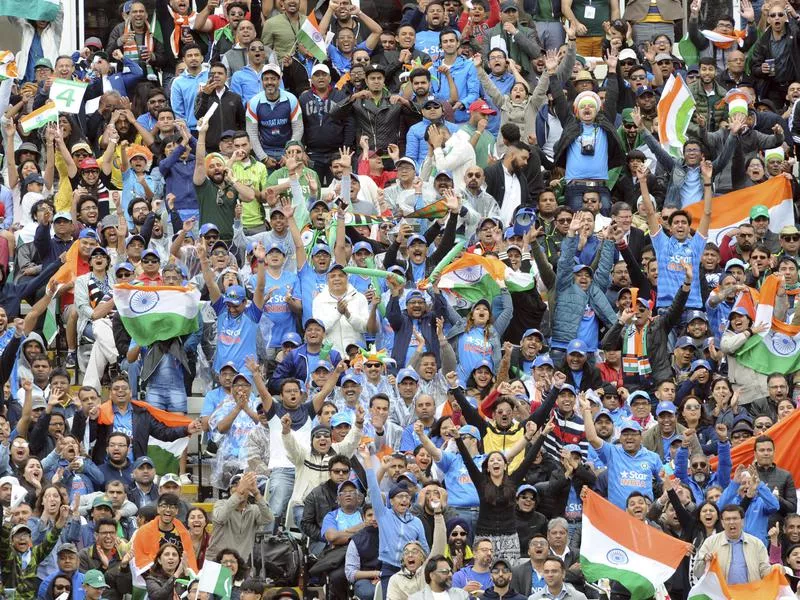
Indian cricket fans celebrate after their captain Virat Kohli scored 50 runs during the 2017 ICC Champions Trophy match between India and Pakistan at Edgbaston in Birmingham, England. Rui Vieira / AP Photo
ICC claims that cricket has over 1 billion fans around the world. The average age of fans is 34 with a demographic breakdown that is 61 percent male and 39 percent female.
The Indian sub-continent constitutes 90 percent of the fans, which is no surprise as people there treat cricket as a religion. India features five of the most-viewed matches and Pakistan features three of them.
The 2011 World Cup final between India and Sri Lanka is the most-watched game to date, with 558 million unique viewers around the globe.
The newest and the shortest format of the game, T20I, is the most popular format of cricket with 92 percent fans. ODIs is not far behind at 88 percent. Seventy percent of the fans are interested in tests, the longest format of the game.
World Cup

Pakistan’s Ahmed Shehzad acknowledges his 50 during the 2015 Cricket World Cup Pool B match against Ireland in Adelaide, Australia. James Elsby / AP Photo / File
ICC ODI World Cup is the showpiece event of cricket and occurs every four years.
The Clive Lloyd-led West Indies team won the inaugural edition in 1975, beating Australia by 17 runs in England. The West Indies won the second edition as well, beating England by 92 runs, and reached the finals of the third edition but fell short by 43 runs against Kapil Dev’s India.
Australia has won the event five times, including three consecutive triumphs in 1999, 2003 and 2007.
India (1983, 2011), like West Indies, has won twice while Pakistan (1992) and Sri Lanka (1996) have been crowned once.
The Aussies are the defending Cricket World Cup champions after defeating New Zealand by seven wickets in 2015.
Sachin Tendulkar, who amassed 2,278 runs across six editions, is the highest run-getter in the tournament’s history.
Glenn McGrath, who bagged 71 wickets across four editions, is the leading wicket-taker.
Women’s Cricket
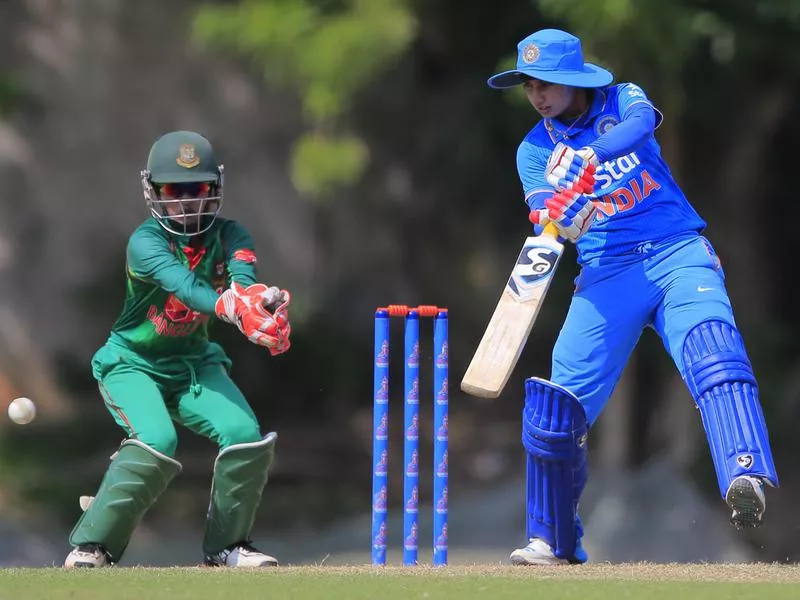
India’s Mithali Raj plays a shot as Bangladeshi wicket-keeper Nigar Sultana Joty watches during their 2017 ICC Women’s World Cup qualifier one day international cricket match in Colombo, Sri Lanka. Eranga Jayawardena / AP Photo
The first women’s international match was played in 1934, but the sport only became popular for women after the ICC World Cup in 2017. England won the tournament by beating India by seven runs in a nail-biting thriller, which had a whopping 180 million global viewers.
Mithali Raj (India) has scored the most runs (6,550), and Jhulan Goswami (India) has picked up most wickets (207) in ODIs.
Suzie Bates (New Zealand) is the highest run-getter (3,007) while Anisa Mohammed (West Indies) is the highest-wicket taker (113) in T20Is.
Even though ODIs and T20Is have grown in leaps and bounds, ICC has decided not to play women’s tests since it’s commercially unviable at this time.
What’s Next?
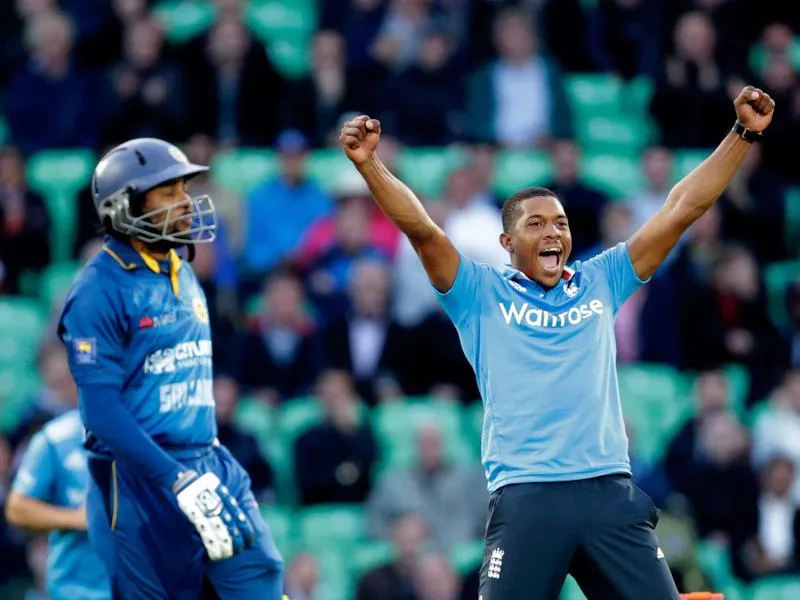
England bowler Chris Jordan celebrates taking the wicket of Sri Lanka’s Tillakaratne Dilshan, left, who was caught out by Harry Gurney during a 2014 one-day cricket match between England and Sri Lanka at the Oval cricket ground in London. Matt Dunham / AP Photo
Now that you know a little about cricket, here are some good websites and resources to learn more.
ESPNCricinfo — This ESPN site has everything a cricket fan would want from a detailed glossary to an explanation for novices to daily news, analysis, player statistics and schedules from around the world. Its statsguru allows you to search player stats by opposition, home or away matches, season, start date and grounds.
Cricbuzz — A one-stop shop for cricket lovers. Specializes in ball-by-ball commentary of live matches. If you read Cricbuzz commentary, you will feel like you’re watching a match. Also provides video analysis with the voice of Indian cricket, Harsha Bhogle, a famous cricket commentator and writer.
Cricket 365 — Quality cricket information, with fun stuff like quizzes and other features.
Cricket World — A good place to stay in the know.
How to Play Cricket — This seven-minute YouTube video offers a good primer for beginners.
“Cricket for Americans: Playing and Understanding the Game” — Tom Melville’s 1993 book is a nice read on the old game.
“Cricket Explained: From Grubbers to Googlies — A Beginner’s Guide to the Great English Pastime” — This 1993 guide by Robert Eastaway explains the complexities of cricket in a user-friendly way.
Wisden, ICC, Sportskeeda, Crictracker, BBC Sport, and The Hindu are some other notable cricket websites.